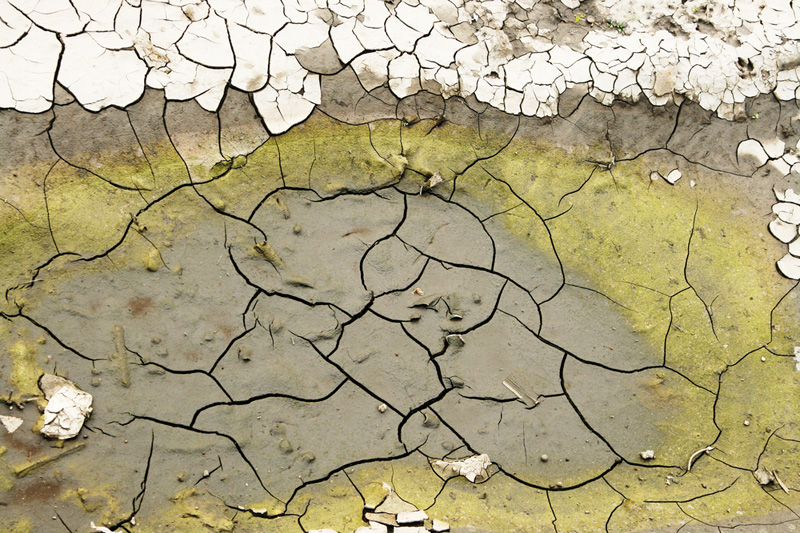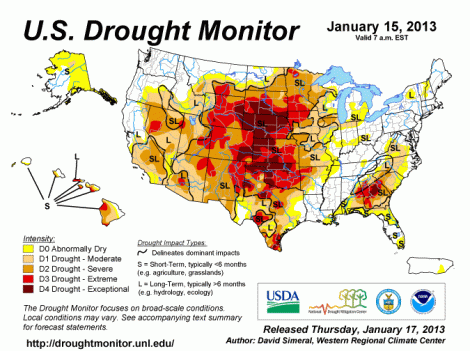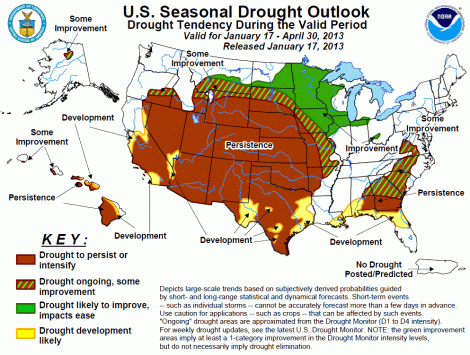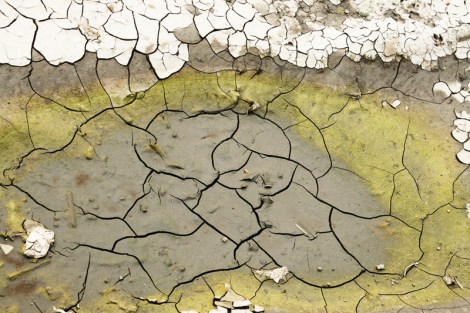Do you know where the largest desert in the world is? Go ahead, Google it. I’ll wait. The correct answer: the Antarctic. Even though it is cold and covered with snow, it receives very, very small amounts of precipitation. The more you know, etc.
I bring this up to demonstrate that appearances can be deceiving. Right now, for example, it is winter. And despite that, and despite the fact that the United States saw a decent amount of precipitation last week, much of the country is still under drought conditions — nearly 59 percent of the lower 48 states, in fact.
And that is likely to continue. From Climate Central:
The national drought footprint shrank slightly this week, as heavy rains fell across the South, Southeast, Midwest and parts of the Mid-Atlantic states, and major snowfall blanketed parts of the Rocky Mountains and Northern Cascades, bringing relief to those regions. However, the hardest-hit drought region — the Great Plains — continued to experience drier-than-average conditions, with the drought continuing to hold on.
A new federal drought outlook issued on Thursday projects that the drought conditions are likely to remain entrenched through April, and that the drought may even worsen from the Plains to the Rockies and into the Southwest, along with another area of persistent and expanding drought in the Southeast, including southern Georgia and the Florida Panhandle.
Here’s what the National Oceanic and Atmospheric Administration thinks that persistence will look like by May.
Even in winter, the ripple effects of the drought continue. Over the past 25 years, budget cuts have meant that the Army Corps of Engineers only fully dredged the Great Lakes six times. Without dredging properly, sediment builds up in shipping lanes. Making matters worse, the drought is causing water levels to drop. That combination of higher lake floors and less water is forcing ports along the lakes to close.
The 2012 drought was, by many measures, the worst since the Dust Bowl era. It’s not over yet. Just as a little cool weather doesn’t undermine the concept of global warming, a little precipitation doesn’t end a drought. And sometimes deserts are frozen solid.







